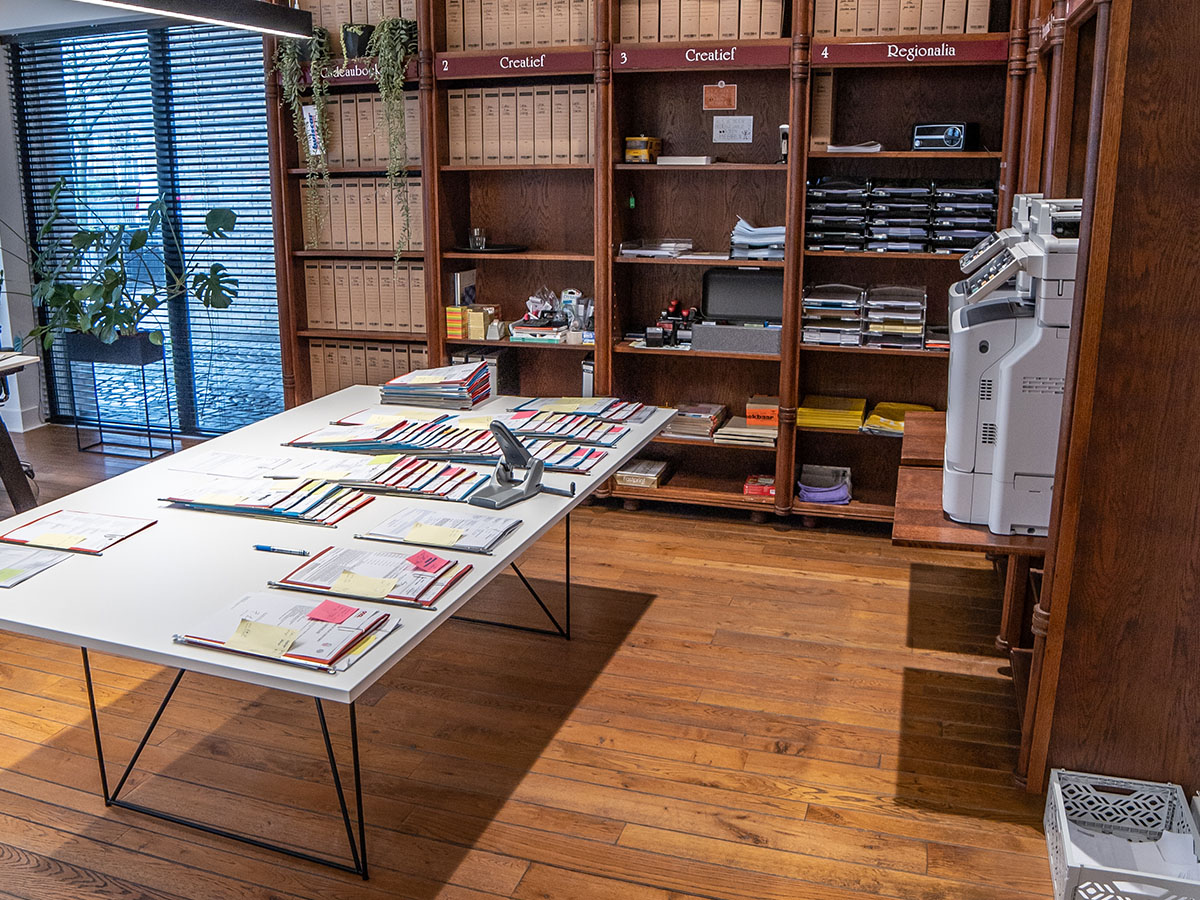How to choose the right payment method for your international transaction?
Author: Marloes Wittebroek
Published on: 23/10/2025
Doing business internationally opens doors, but it also brings uncertainties. One of the most critical decisions you make as an exporter or importer is the choice of payment method.
Do you opt for maximum security, or do you rely on a long-standing trade relationship? Each payment method represents a unique balance between risk, cost, and trust. In this article, we explain the four main payment methods – Advance Payment, Documentary Collection, the Letter of Credit, and Open Account. We explain how they work, who they are suitable for, and help you make the right choice for your specific situation.
The basis: risk versus trust
The choice of a payment method is always a trade-off. Think of it as a spectrum: at one end is 100% security for the exporter (and thus 100% risk for the importer), and at the other end, it is the exact opposite. Where your transaction falls on this spectrum depends on the relationship with your customer, the order size, and the stability of the country you are doing business with.
Option 1: Advance Payment
- What is it? This is the most secure option for the exporter. The buyer pays the full amount (or a substantial part) of the order before the goods are produced or shipped;
- How does it work in practice? The process is simple: the importer transfers the agreed-upon amount via a standard bank transaction. As soon as the exporter receives the payment, they begin production or shipment of the goods;
- When do you choose this? This method is ideal in situations with a high risk for the seller. Think of a first transaction with an unknown customer, doing business with a politically or economically unstable country, or when producing highly specific, custom-made goods that cannot be sold to anyone else.
Advantage & disadvantage
- Advantage: maximum security for you as the exporter. No payment risk;
- Disadvantage: maximum risk for the importer. They have paid but must wait and see if and when the goods will be delivered. This can be commercially unattractive.
Option 2: Documentary Collection
- What is it? Documentary collection is a middle ground where banks act as a sort of post office for the trade documents. They do not guarantee payment, but they do ensure that the buyer only receives the documents (and thus the goods) after payment or acceptance;
- How does it work in practice? The exporter ships the goods and hands over the crucial documents (such as the Bill of Lading, which represents ownership) to their bank. This bank sends the documents to the importer’s bank. The importer is informed and can obtain the documents by either paying immediately (Documents against Payment, D/P) or accepting a bill of exchange that obligates them to pay at a later date (Documents against Acceptance, D/A);
- When do you choose this? This method is suitable for existing trade relationships where there is already some trust, but not enough to deliver on open account. It is considerably cheaper and less complex than an L/C.
Advantage & disadvantage
- Advantage: the importer cannot take possession of the goods without paying or committing to payment;
- Disadvantage: the importer can still refuse to accept the documents. You as the exporter then run the risk of your goods being stuck in a foreign port, leading to high costs for storage or return shipment.
Option 3: Open Account
- What is it? This is the riskiest payment method for the exporter, based on pure trust. The goods are shipped and delivered before payment is received, with an agreed payment term (e.g., within 30, 60, or 90 days);
- How does it work in practice? The exporter ships the goods and sends the invoice directly to the importer. They then trust that the importer will pay on the agreed-upon due date;
- When do you choose this? Exclusively for long-term, highly reliable trade relationships. This is often used between parent and subsidiary companies or with regular, financially strong customers in economically stable countries;
Advantage & disadvantage
- Advantage: maximum convenience and security for the importer, which can strengthen your commercial relationship;
- Disadvantage: maximum risk for you as the exporter. You are completely dependent on your customer’s willingness and ability to pay.
Option 4: The Letter of Credit (L/C) – The Golden Mean
- What is it? The Letter of Credit is unique because it is not a direct payment method, but an irrevocable payment guarantee from a bank. The buyer’s bank guarantees payment, as long as you, the exporter, present the correct documents in the correct way;
- How does it work in practice? The process is strict and detailed, where documents are the key to payment. For a full explanation of the process and the parties involved, we refer you to our [link to your Letter of Credit landing page];
- When do you choose this? The L/C is the ideal solution when security is essential for both buyer and seller. Perfect for new markets, high-value transactions, or trade with countries where the risk is higher. It effectively bridges a lack of trust;
Advantage & disadvantage
- Advantage: The only method that virtually eliminates the payment risk for the exporter AND the delivery risk for the importer;
- Disadvantage: It is the most expensive and complex payment method, requiring specialist knowledge to avoid errors (discrepancies).
The ‘best’ payment method does not exist; the right choice depends entirely on your specific transaction. The table below provides a clear overview of the balance between security, cost, and complexity.
| Payment Method | Security exporter | Security importer | Costs | Complexity |
| Letter of Credit | Very high (++): Payment guaranteed by bank(s) with correct documents. | High (+): Security that payment is only made after proof of shipment. | High (+): Bank costs for opening, advising, etc. | High (+): Strict procedures and document requirements. |
| Documentary Collection | Low (-): No bank guarantee; buyer can refuse to accept documents. | Medium (+/-): Receives documents only after payment or acceptance of a bill of exchange. | Low (-): Only administrative bank costs. | Medium (+/-): Coordination via banks required. |
| Advance Payment | Maximum (+++): Money is received before the goods depart. No risk. | Very low (–): High risk; payment is made without certainty of delivery. | Very low (–): Only standard transaction costs. | Very low (–): Simple bank transfer. |
| Open Account | Very low (–): High risk; you send the goods and wait for payment. | Maximum (+++): Pays only after receiving the goods. No risk. | Very low (–): Only standard transaction costs. | Very low (–): Simple bank transfer. |
When you weigh the different options and conclude that security for both parties is the highest priority, the Letter of Credit is the most robust solution. It is a complex instrument, but the security it offers is invaluable.
Do you need help navigating this process, or do you want to completely outsource the handling of your Letters of Credit? Then contact Elceco. We are the specialist who ensures your international transactions proceed smoothly and without risk.
Read more articles
Doing business internationally opens doors, but it also brings uncertainties. One of the most critical decisions you make as an exporter or importer is the choice of payment method. Do you opt for maximum security, or do you rely [...]
Are you curious about the most common pitfalls and how to prevent them? We have listed the problems and their solutions for you in this article. A Letter of Credit is a powerful instrument, but the process is strict [...]
We previously wrote an article about the differences between Cash Against Documents (CAD) and a Letter of Credit (L/C). In the current turbulent geopolitical economic situation, we tend to say that an L/C is the safest choice in many [...]
You've been doing business with a customer in a specific country for years based on a Letter of Credit, and everything runs smoothly. They are satisfied with the products you supply, and you receive payment promptly. So far, so [...]





